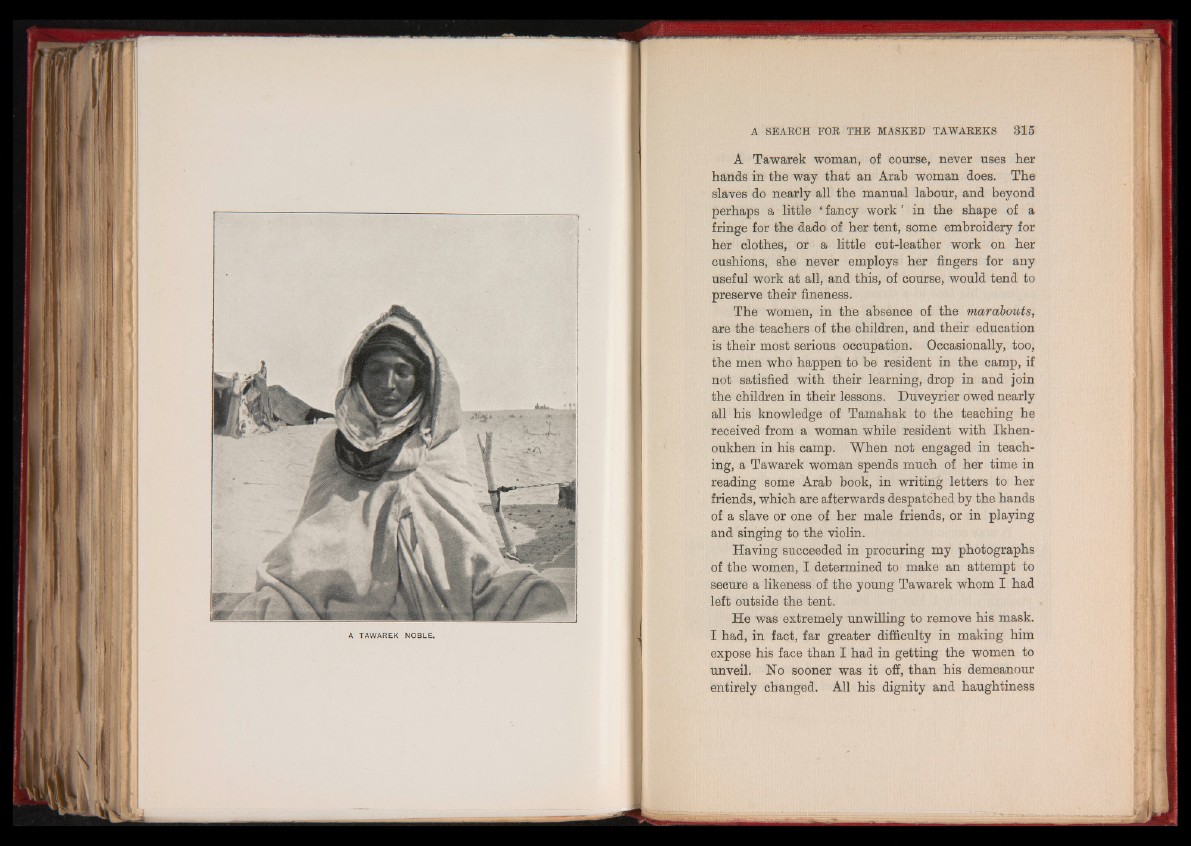
A TAWAREK NOBLE.
A Tawarek woman, of course, never uses her
hands in the way that an Arab woman does. The
slaves do nearly all the manual labour, and beyond
perhaps a little ‘ fancy work ’ in the shape of a
fringe for the dado of her tent, some embroidery for
her clothes, or a little cut-leather work on her
cushions, she never employs her fingers for any
useful work at all, and this, of course, would tend to
preserve their fineness.
The women, in the absence of the marabouts,
are the teachers of the children, and their education
is their most serious occupation. Occasionally, too,
the men who happen to be resident in the camp, if
not satisfied with their learning, drop in and join
the children in their lessons. Duveyrier owed nearly
all his knowledge of Tamahak to the teaching he
received from a woman while resident with Ikhen-
oukhen in his camp. When not engaged in teaching,
a Tawarek woman spends much of her time in
reading some Arab book, in writing letters to her
friends, which are afterwards despatched by the hands
of a slave or one of her male friends, or in playing
and singing to the violin.
Having succeeded in procuring my photographs
of the women, I determined to make an attempt to
secure a likeness of the young Tawarek whom I had
left outside the tent.
He was extremely unwilling to remove his mask.
I had, in fact, far greater difficulty in making him
expose his face than I had in getting the women to
unveil. No sooner was it off, than his demeanour
entirely changed. All his dignity and haughtiness